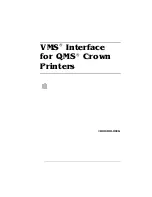
Crestron
e-control Vote SW-VOTE
43
••
Server Configuration In Depth
Installation & Reference Guide — DOC. 5822
The
Request-to-Speak Queue Definition
window,
as it appears when adding a new queue.
This window prompts you to choose from a list of currently defined scrollers (excluding
those already in the list of queues for this RTS console). The new queue is added to the
bottom of the list. In addition to naming a scroller, if the queue should clear automatically
when a seat is recognized from the first (top) queue, check the
Auto-clear
box.
•
Mod…
Also displays the
Request-to-Speak Queue Definition
window. Here you can change the
scroller to be used by the queue; and the state of the auto-clear option (see “Add…,”
above
).
•
Del
Removes the selected queue from the list of queues.
•
é
[Move queue up]
Moves selected queue up the list one position. The significance of the position of the
queue in the list is explained in the next section, “Queue definition.”
•
ê
[Move queue down]
Moves selected queue down the list one position. The significance of the position of the
queue in the list is explained in the next section, “Queue definition.”
Queue definition
Queues are implemented as Scroller signal blocks. These can be either Standard
Scrollers or Custom Scrollers. If you do not need to show more than eight lines at a
time, Standard Scrollers can be used. (Demo1 shows only four lines at a time and
uses Standard Scrollers.) Otherwise, you will need to use Custom Scrollers (which
require the installation to be licensed for SW-DBM).
Once defined, such scroller(s) are associated with the RTS Console using the
Add…
command button described in the preceding section. Once added, the scroller(s)
serve as queues for the RTS Console. Each queue thus added adds a set of
n
Req
(incoming) signals to the RTS Console definition, where
n
is the number of seats
(see “Seats w/ RTS buttons,” above). These signals are connected to each seat’s RTS
button; there is one such set of signals per queue; the number of RTS buttons at each
seat and the number of queues defined should match.
The order of the sets of
Req
signals is defined by the order of the queues in the
queue set. This order can be modified with the
é
[Move queue up]
and
ê
[Move
queue down]
command buttons (described above). Specifically, the first queue in the
list is associated with the first
n
signals,
Req
s
(where
s
= 1 to
n
). If there is more than
one queue defined in the RTS Console, each additional queue is associated with each
succeeding set of
n
signals,
Req
q,s
(where
q
= the ordinal position of each queue).
See the entry in the Signal Reference for more information about the
Req
signal
(page 108).
















































